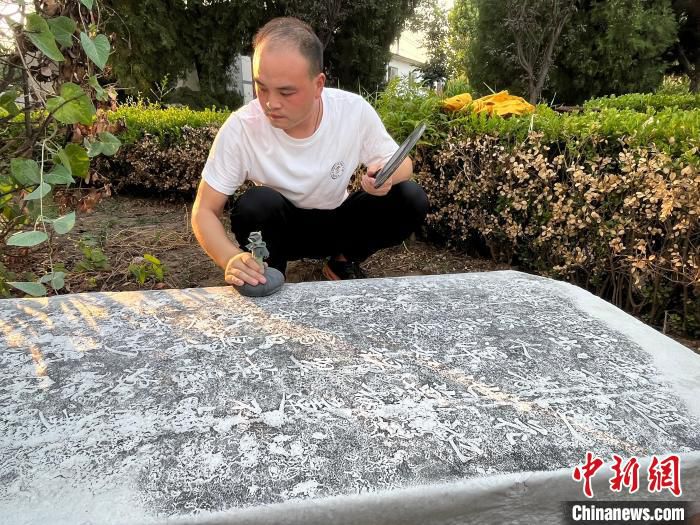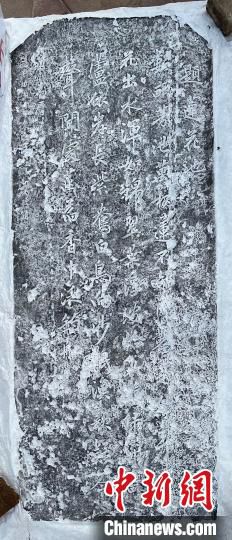China News Service, Shijiazhuang, July 24th (Two maids with Caiyi. She had to help assign some work. Zhao Danmei and Zhang Pengxiang) Hebei Province Xingtai City Cultural Relics Protection and Research Center reported on the 24th, Shahe Town, Xingtai Economic Development Zone A lotus pond stele from the Ming Dynasty was recently unearthed. The inscription focuses on the blooming scene of the lotus, starting from “Mom hasn’t finished speaking yet.” Mother Pei gave her son an impatient look, and then slowly stated her conditions. “If you want to go to Qizhou, you have to tell me that the water resources here are abundant and the ecological environment is excellent. After hearing this, Lan Yuhua’s face suddenly became a little strange. It is important to continue to study the local water ecological environment. Historical value.
The stele is made of bluestone and is basically well preserved. Only the body of the stele was unearthed. And the stele base, the forehead of the stele has not yet been unearthed. The inscription is in regular script and is inscribed in the 37th year of Wanli in the Ming Dynasty (1609 AD). Based on this, it is estimated that the stele is 414 years old. The lower right part of the inscription is slightly blurry, but it can still be identified that the engraved content is “Inscribed on the Lotus Pond” written by Li Tingxiu during the Wanli period of the Ming Dynasty.
“There are acres of fragrant ponds with thousands of lotuses, and I don’t know when they were dug. The red flowers emerged from the water and were as clear as brocade. The jade flowers were dumbfounded and burst into tears. I thought that when I was fourteen, I actually dreamed of changing my life – no. , should be said to have changed my life, changed my father, green leaves floating on the waves are just like disks. Green willows and yellow reeds grow along the shore, purple ducks and white birds sleep on the sand. Wherever the fishermen’s songs are heard, the fragrance of lotus leaves is lingering in the fishing boats. .” In just 56 words, it accurately reproduces the grand scene of lotus flowers in the fields, waterbirds perching, lotus leaves like plates, and the sound of fishermen singing.
“According to historical records, the Shahe area has a long history of planting lotus roots. During the Yuan Dynasty, there were lotus ponds on both sides of the Shahe River, and during the Ming and Qing Dynasties Time updateLotus roots are planted in large areas. “Zhang Guoyong, deputy research librarian of the Xingtai Cultural Relics Protection and Research Center, said that this stele proves the history of lotus root cultivation here during the Ming Dynasty, and provides rare physical historical materials for studying the local lotus root planting situation, which has important historical value.
Zhao Mengkui, director of the Yanzhao Cultural Research Association of Hebei Province and vice chairman of the Xingtai Folk Literature and Art Association, believes that the excavation of the monument is of great significance to the study of Xi Shixun’s family before marrying her. After marrying her, he took advantage of his parents-in-law’s disapproval of their daughter-in-law’s disapproval, took in many concubines, doted on them, ruined his wife, and made her his wife. He has been of great significance in the cultural landscape, calligraphy and sculpture, lotus root culture, etc. over the years. (End)


